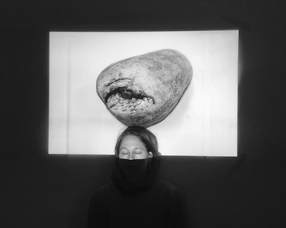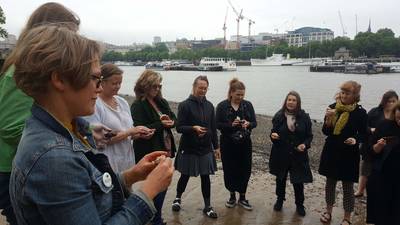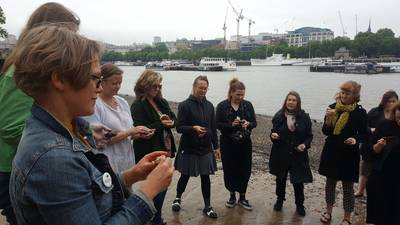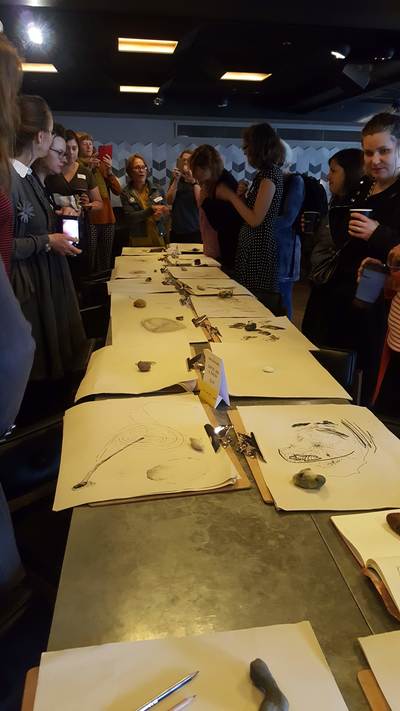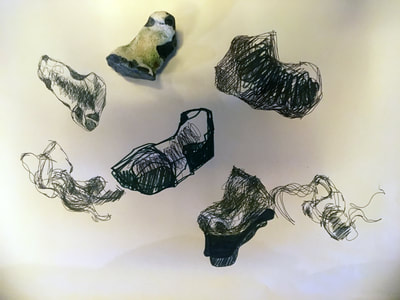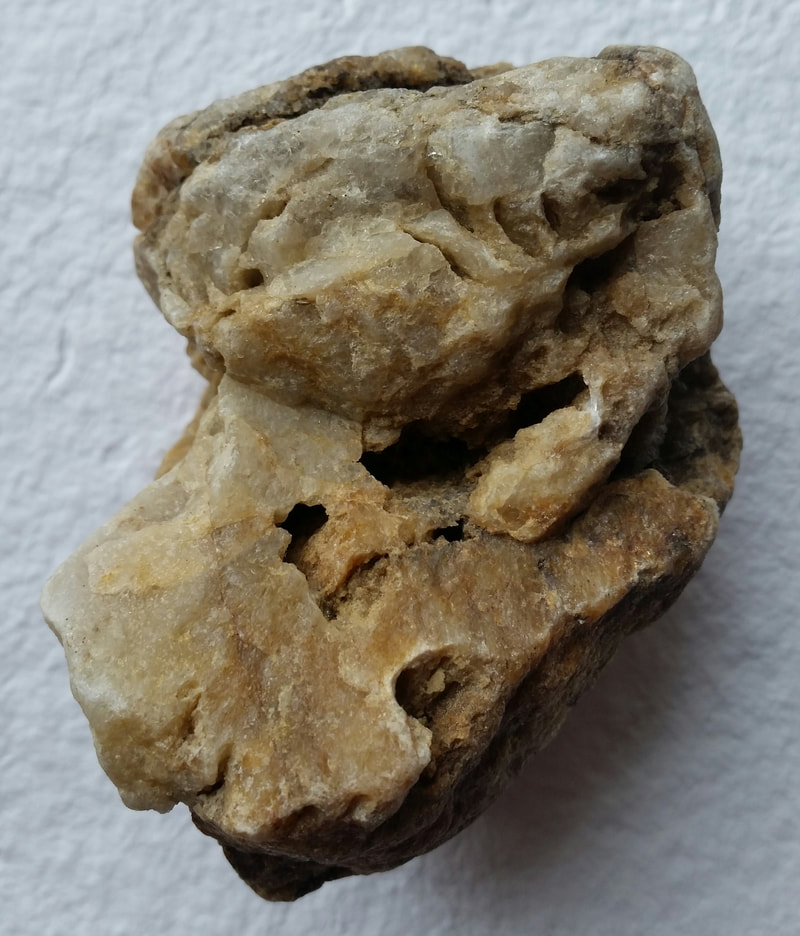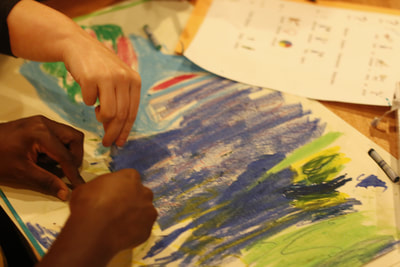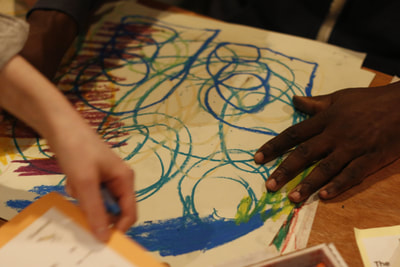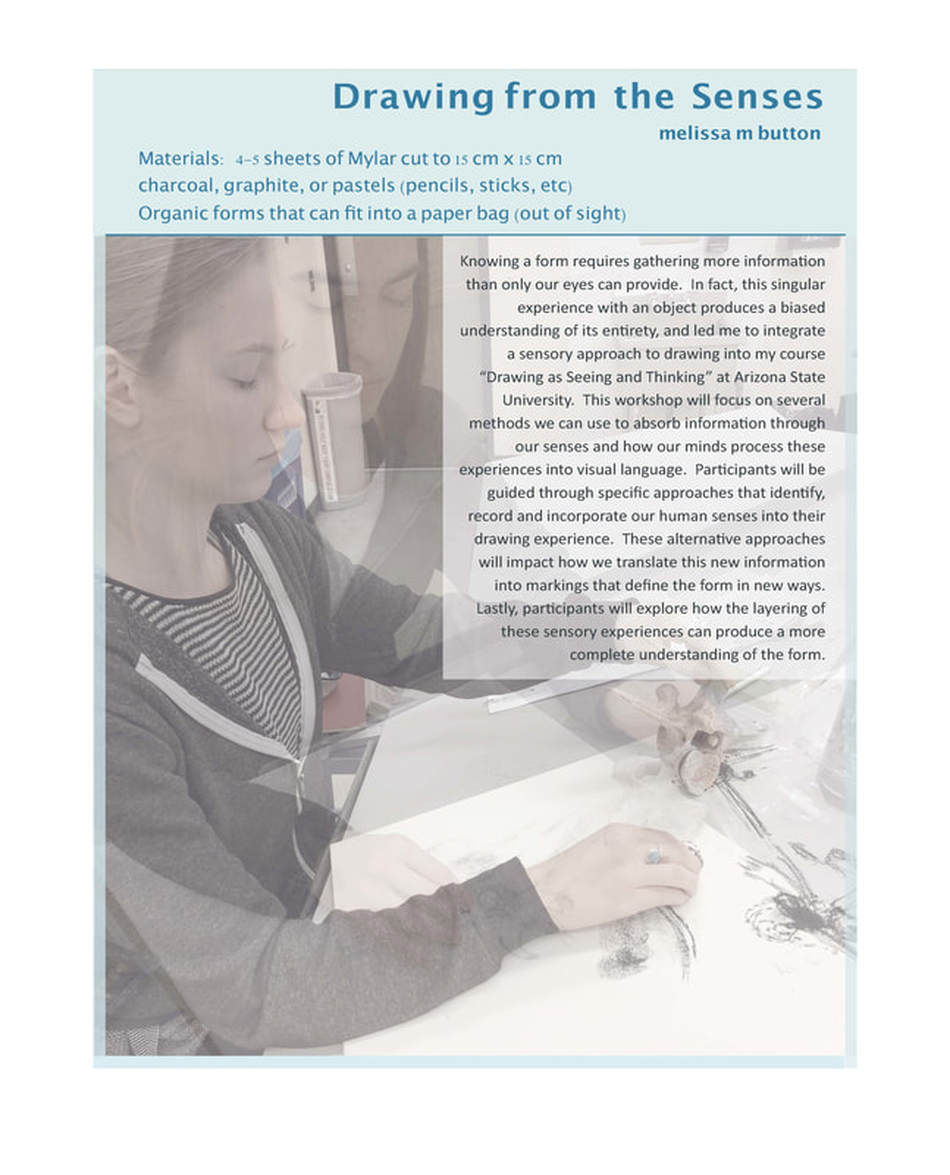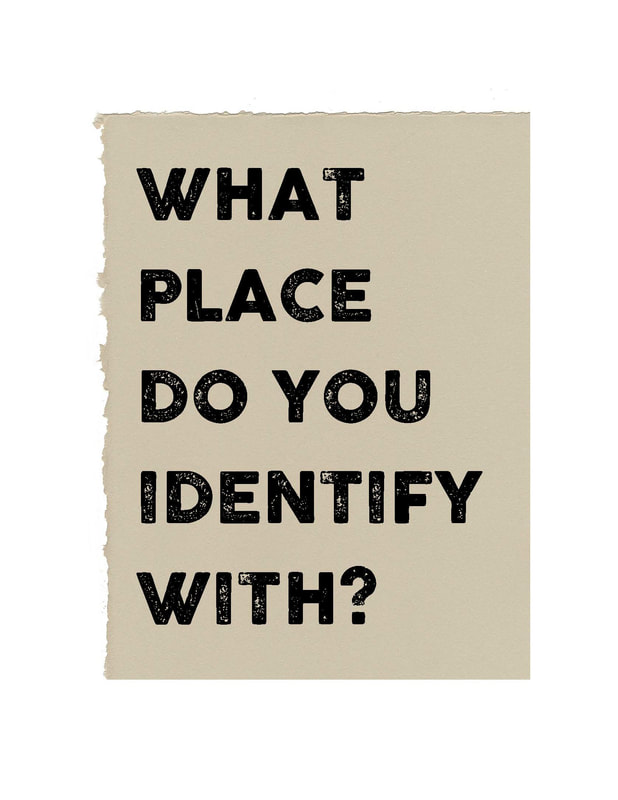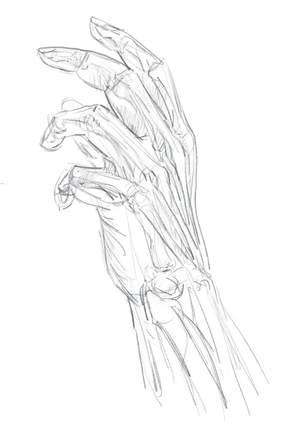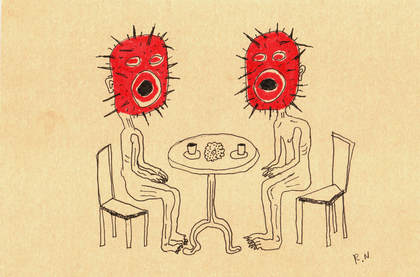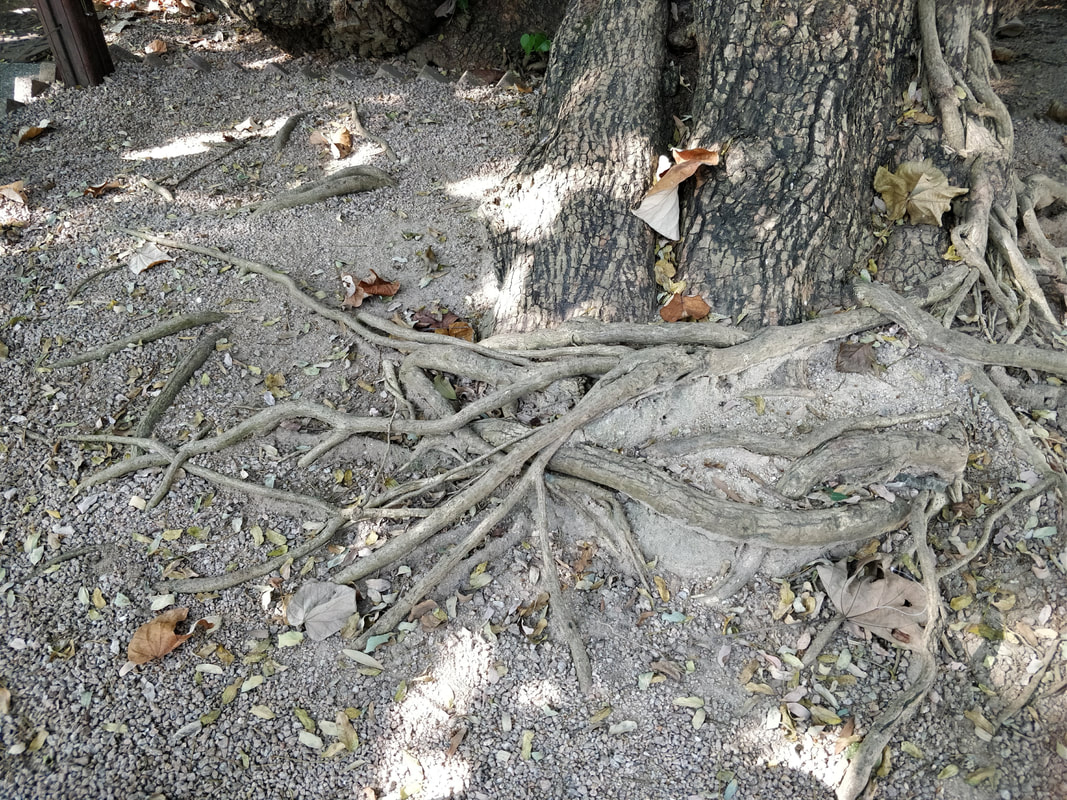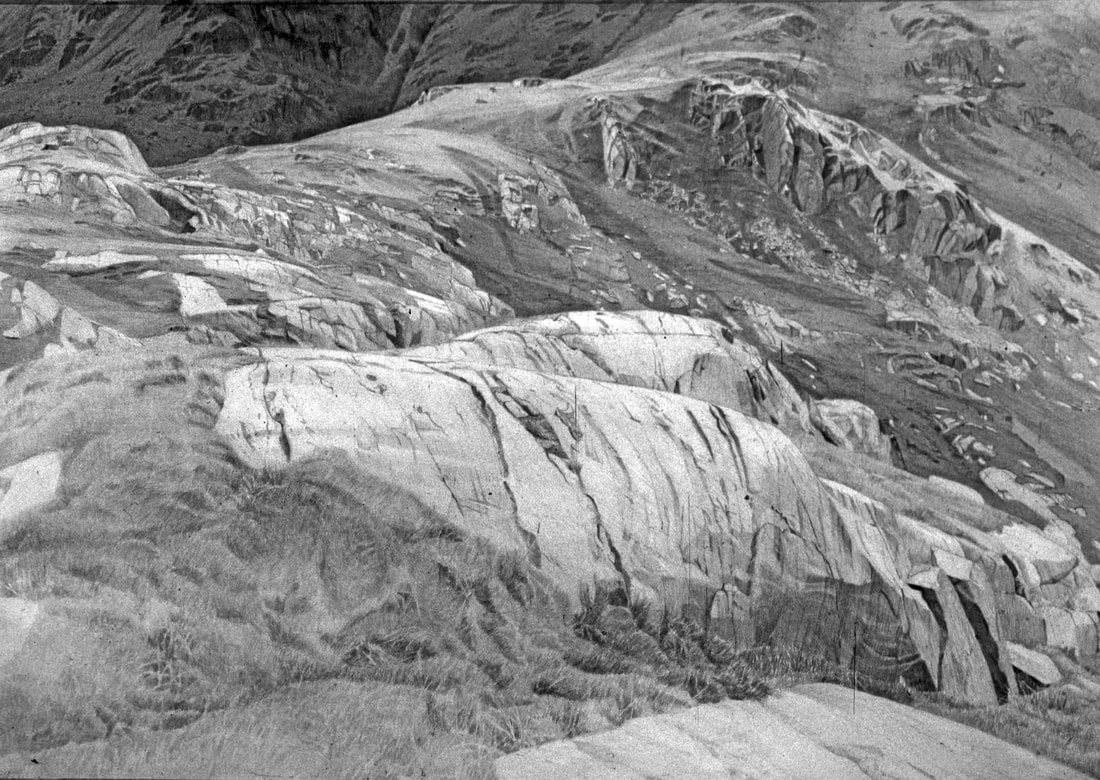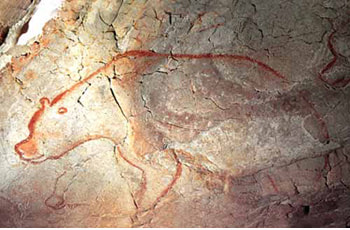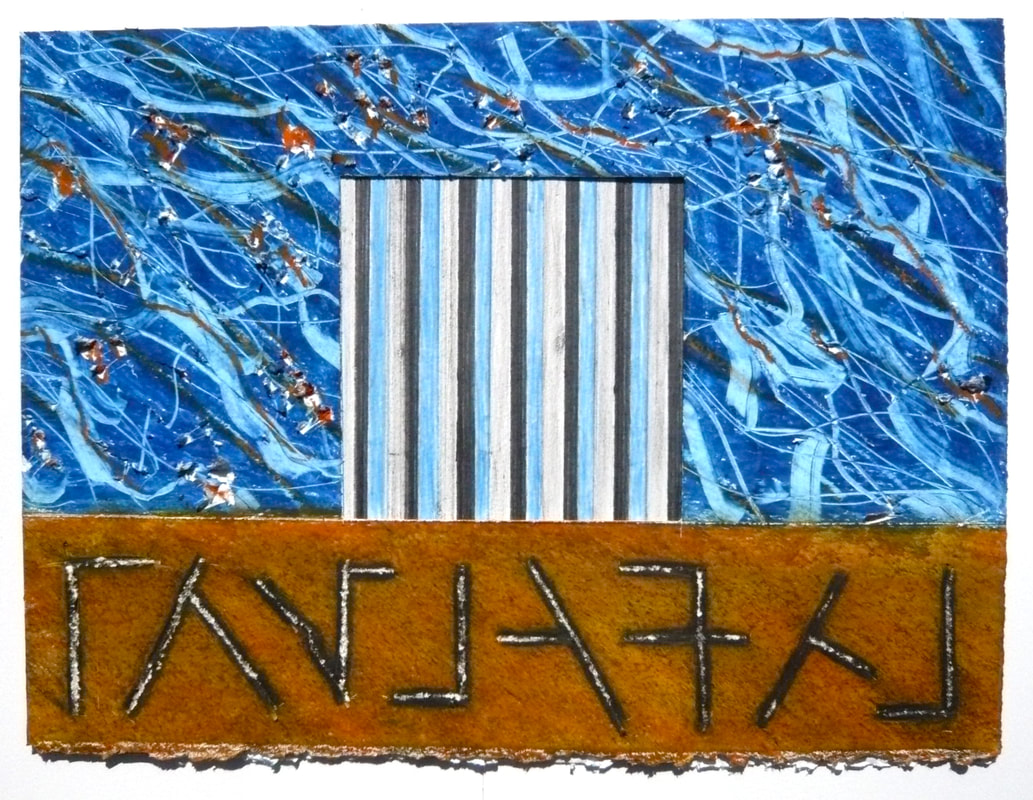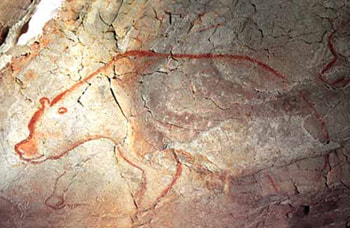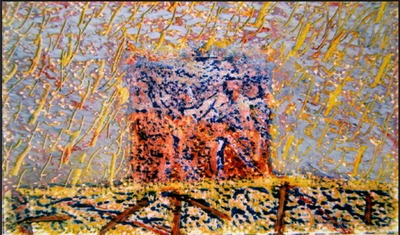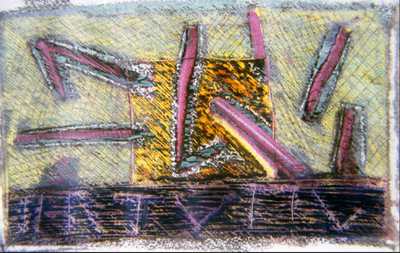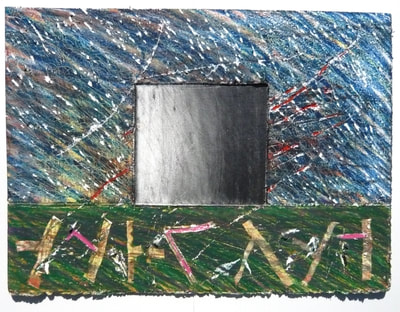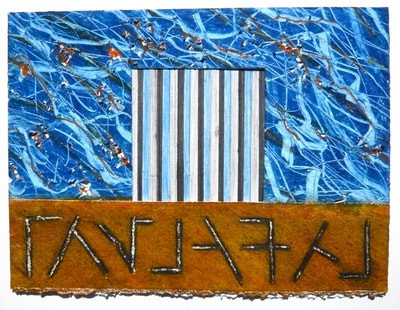Thinking through Drawing
2018 PROCEEDINGS:
DRAWING ROCKS!
What is Drawing Good For?
4-6th June 2018 in The Secret Drawing Room, BFI, Southbank, London
The Directors of TtD and Brew Drawing would like to extend our heartfelt thanks to all the delegates and to the TtD and Brew Crews for their professional support with logistics, AV etc.
- So many early starts, driving into London to beat the rush hour traffic!
- So many early starts, driving into London to beat the rush hour traffic!
Special thanks to Emily for live streaming of workshops and presentations - recordings of most of them are available here.
SCHEDULE
Day 1, June 5th
Mudlarking.with Emma Fält and Michael Moore
Workshop with Michael Moore
Robin and the The Camberwell Incredibles! Workshop
Rebecca Chamberlain - DrawLearn presentation
Workshop with Melissa Button
Tea and cake with Barbara Tversky in Italy
Heidi Hogden Workshop - Remembrance through Drawing
Seymour Simmons III - Workshop
Panel discussion
7-11pm
DoBeDo, Silent Drawing Party
zzzzz...
Day 2, June 6th
Collaborative drawing
Emily Sheehan - Workshop
Haley Wulfman - Workshop
Riina Näsi - Workshop
Jackie Hall - presentation - On Symbolism
Camilla Brueton - presentation - UAL DRAW
Curie Scott - presentation of research on adults’ experiences of intuitive drawing
Michael Namkung - Workshop
Andrea Kantrowitz - Workshop
Reflection, TtD future planning
Day 1, June 5th
Mudlarking.with Emma Fält and Michael Moore
Workshop with Michael Moore
Robin and the The Camberwell Incredibles! Workshop
Rebecca Chamberlain - DrawLearn presentation
Workshop with Melissa Button
Tea and cake with Barbara Tversky in Italy
Heidi Hogden Workshop - Remembrance through Drawing
Seymour Simmons III - Workshop
Panel discussion
7-11pm
DoBeDo, Silent Drawing Party
zzzzz...
Day 2, June 6th
Collaborative drawing
Emily Sheehan - Workshop
Haley Wulfman - Workshop
Riina Näsi - Workshop
Jackie Hall - presentation - On Symbolism
Camilla Brueton - presentation - UAL DRAW
Curie Scott - presentation of research on adults’ experiences of intuitive drawing
Michael Namkung - Workshop
Andrea Kantrowitz - Workshop
Reflection, TtD future planning
Day 1
The event began with a Mudlarking session on the nearby Thames beach, led by Emma Fält and Michael Moore.
Workshops and presentations that were Live Streamed include a link here to the recording. Reports, powerpoints, drawings and feedback on presentations will be added here over the next fortnight, to build the proceedings. If you attended please send feedback and reviews for proceedings to [email protected]
Drawing from Drawing,
|
|
Then!
The Camberwell Incredibles!
Please send us your memories, feedback, photos or scans of your drawings, to [email protected] and we will include it in this review.
Review of the INCREDIBLE workshop by artist educator Robin Whitmore
I would like to say a few things about my fine group at the TtD so here goes:
The Camberwell Incredibles are an arts group of adults with learning differences supported by artist educators. Within our group there is a wide range of levels of cognitive ability and complex needs, most are on the autistic spectrum, and one or two are almost nonverbal. We meet twice a week at Cambridge House, a charity that specialises in socially engaged projects that work to combat poverty in south London. The Camberwell Incredibles produce powerful artwork and regularly hold art exhibitions and stage public performances.
We were keen to share the energy and passion that we all have for drawing.
Despite enjoying meeting new people, the experience of being in an unfamiliar chaotic environment can be overwhelming for most of the group and lead to them becoming withdrawn and unsure how to behave. Drawing can provide clear points of focus through structured familiar activity allowing everyone to feel comfortable in an alien environment.
A series of simple interactive activities was set up to enable symposium participants to engage with the individual members of the group on a one to one basis.
Our workshop was organised as a series of different drawing games, tailored to each of the group's specific talents and interests, which visitors were encouraged to play. Where extra support was needed one of our facilitators was on hand offering guidance to both parties. Each game was different, and to save repeating the rules of engagement, written instructions were provided introducing you to the group member which explained exactly what the activity was and what was required of you. These instructions were also written in the specialist hieroglyphics the group uses (Symwriter widgits) as most are unable to read conventionally. Symposium participants were asked to spend about five minutes interacting with each member of the group.
The individual drawing games included:
Mirror drawing and deciphering the images being created by Andy
Collaborative drawing based on a song chosen by JoJo
Taking on the role of Ed's drawing/ writing secretary and creating a collage with him
Answering questions leading to a portrait of your inner animal being drawn by Blue
Creating a wall of drawn bricks with Charlene
Quietly observing and interacting with Danny's two handed multiple pen drawing
Taking turns with Sam drawing and naming objects associated with different colours
A fast double portrait drawing with Bulent
A performance by Andy and Dan knocking over a pot of ink then brushing it out on the floor
As always events like this are seriously meaningful for our group, where they are recognised as having something important to offer others and where their natural exuberance and lust for life is celebrated.
They all really enjoyed the experience.
Review of the INCREDIBLE workshop by artist educator Robin Whitmore
I would like to say a few things about my fine group at the TtD so here goes:
The Camberwell Incredibles are an arts group of adults with learning differences supported by artist educators. Within our group there is a wide range of levels of cognitive ability and complex needs, most are on the autistic spectrum, and one or two are almost nonverbal. We meet twice a week at Cambridge House, a charity that specialises in socially engaged projects that work to combat poverty in south London. The Camberwell Incredibles produce powerful artwork and regularly hold art exhibitions and stage public performances.
We were keen to share the energy and passion that we all have for drawing.
Despite enjoying meeting new people, the experience of being in an unfamiliar chaotic environment can be overwhelming for most of the group and lead to them becoming withdrawn and unsure how to behave. Drawing can provide clear points of focus through structured familiar activity allowing everyone to feel comfortable in an alien environment.
A series of simple interactive activities was set up to enable symposium participants to engage with the individual members of the group on a one to one basis.
Our workshop was organised as a series of different drawing games, tailored to each of the group's specific talents and interests, which visitors were encouraged to play. Where extra support was needed one of our facilitators was on hand offering guidance to both parties. Each game was different, and to save repeating the rules of engagement, written instructions were provided introducing you to the group member which explained exactly what the activity was and what was required of you. These instructions were also written in the specialist hieroglyphics the group uses (Symwriter widgits) as most are unable to read conventionally. Symposium participants were asked to spend about five minutes interacting with each member of the group.
The individual drawing games included:
Mirror drawing and deciphering the images being created by Andy
Collaborative drawing based on a song chosen by JoJo
Taking on the role of Ed's drawing/ writing secretary and creating a collage with him
Answering questions leading to a portrait of your inner animal being drawn by Blue
Creating a wall of drawn bricks with Charlene
Quietly observing and interacting with Danny's two handed multiple pen drawing
Taking turns with Sam drawing and naming objects associated with different colours
A fast double portrait drawing with Bulent
A performance by Andy and Dan knocking over a pot of ink then brushing it out on the floor
As always events like this are seriously meaningful for our group, where they are recognised as having something important to offer others and where their natural exuberance and lust for life is celebrated.
They all really enjoyed the experience.
Drawing from the Senses
Melissa Button
video recording of workshop
DrawLearn presentation
Rebecca Chamberlain
video recording of presentation
Remembrance through Drawing
Heidi Hogden
Artists who create work concerned with memory and the past do not necessarily use the form of a memorial or commemorative gesture. Focusing on artists whose work addresses themes relating to place, the purpose of this presentation is to broaden and deepen the current discussion about the subject of remembrance through drawing. The workshop thereafter explored how drawing can be used to record information, in order to engage more intimately with place. Participants shared their own stories and personal history through a guided drawing exercise.
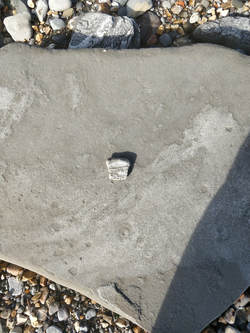
Gesture drawing as a Deweyan experience
Seymour Simmons III
For John Dewey, acquisition of knowledge and creativity both involve experiential processes of doing and undergoing the consequences of one’s action. In drawing, these processes may be most evident in the immediacy of gesture drawing. This 20-minute workshop looks at the power of gesture to engage and integrate cognitive, affective, and sensory-motor faculties in observational and imaginative drawing. Toward these ends, I will introduce ‘blind’ and ‘sighted’ gesture drawing not only as warm up exercises, but as ways to make sense of complicated subject matter, challenging concepts, and composition. So conceived, gesture drawing is, in Kimon Nicolaides’ terminology, both a truly ‘natural way to draw,’ and a ‘natural way to create:’ the first inviting sensitive and accurate perception through seeing and responding; the second allowing the development of ideas through fluency, flexibility, originality, and elaboration.
Discussion Panel, Day 1
Drawing & Sensation, Perception & Cognition
Video recording
Day 2
Building up from Bones – Understanding Hands
Emily Sheehan
Video recording of workshop
This workshop engaged the symposium participants in an anatomy-based drawing process that teaches drawers how to recognize, relate to, and represent both visible surface and (un)visible underlying structure. Developing this perception and application of drawing, in the familiar context of the human body, can shift and expand the way that drawing can be used to more broadly problem-solve, by providing descriptive strategy that uses drawing to appreciate, analyze and utilize elegant connections that link form to function.
Powerpoint to be uploaded
